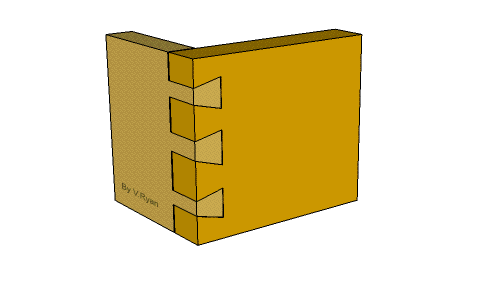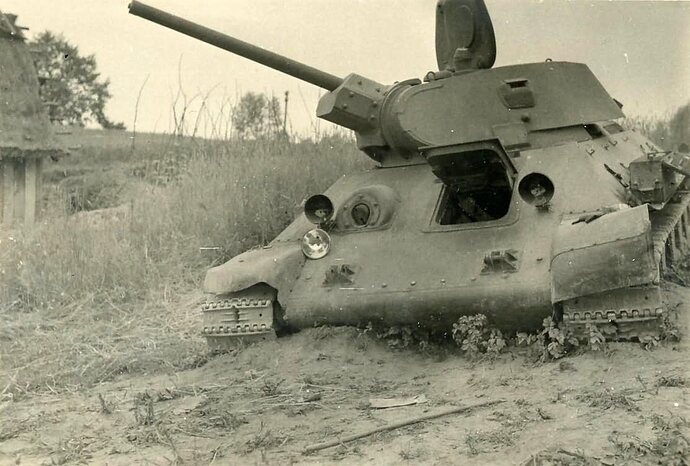More than a bit late to the discussion, but I’d offer up a couple of general observations.
It’s not surprising that these modeler discussions almost always focus on the narrow technical aspects, very often in direct comparative ways, such and thus sub-technology on this tank was superior to the tech used on the opposing force tank for the same purpose, therefore this tank was, itself, overall superior. Afterall, we modelers are often as not attracted to the subjects by the technology and aesthetics. The “cool-factor” often becomes the focus.
Except for a few comments above (K.L. and a couple of others), very seldom are the broader contexts of the designs, like doctrine, logistics and economics discussed.
Another aspect often missing from the discussions is the effect that the advancement of general science the evolution of materials and other technologies has on the development of designs.
For instance, the similarities in armored warfare doctrine that led to the development and fielding of multiple “classes” of tanks (“light, medium and heavy” or “light, cruiser and infantry”) were driven (no pun intended) by existing automotive, metallurgy and propellent (chemistry) technologies as much or more than other doctrinal considerations. I’d argue that doctrines were created to use the available tank types (or classes) which were themselves limited in design by the available technologies.
Once intercontinental war has begun, then the aspects of national economies, manufacturing and global logistics take priority over the possibilities of technologies that may also be advancing. These economic, manufacturing and logistical aspects are more unique to each country concerned than science or technology (in general terms) and their national combined application has more to do with what actually shows up on the battlefield than straight forward technological considerations.
So, the super heavy Tiger I, as has been noted, offered up no exceptionally war-winning technological advantages, and its existence represented economic, manufacturing and logistical capabilities and considerations that were almost uniquely German. There was nothing so technologically advanced that the US or British believed that they MUST incorporate into their own designs at the expense of interrupting their own flow of tanks to the battlefield. The Germans relied on piece-work manufacturing using only limited critical natural resources but benefited from internal, terrestrial lines of communication. The Germans were able to recover many broken or combat damaged tanks for return to the homeland for remanufacturing and reissue. This formed a major part of their logistical sustainment effort until the tide of the war in the east turned on them. They never made major improvements in the way they manufactured key equipment, so while they became more efficient, they never actually expanded their manufacturing base to true, mass production.
The British designed and fielded an ever-evolving range of tanks and tank types because their own economic and manufacturing capabilities (again, traditional European piece-work) were limited such that stopping the manufacture of one model to start another didn’t create a crippling effect on the production of all the other types. The British could afford to do this because their manufacturing base was limited and they were not trying to supply a global war effort. The British never moved to true mass production, either.
The Soviets concentrated on a limited range of tank types with incremental improvements because their manufacturing base was seriously disrupted early in the war requiring near complete relocation and reestablishment, and they were later able to expand to design and produce heavy tank designs because they only had to supply a single theater across internal, secured terrestrial lines of communication. The Soviets could (and did) collect up their battlefield lost tanks for major repair and return to their forces, so reliability and tactical maintenance support only had to be good enough at the very front lines. Broken or damaged tanks were usually located behind Soviet lines to be recovered and reused forming a major part of their logistical sustainment efforts. The Soviets evolved into mass production, but their quality never caught up to the mass. This was acceptable, though, because the battlefield life-cycle of their tanks was one of “reincarnation” to keep operational numbers sufficiently high.
The US concentrated and focused on perfecting the most efficient production of just a few basic designs and put huge effort into making those designs are robust, reliable and easy to maintain as possible because they had to supply a global war effort (keeping not just their own forces supplied, but also those of several allies). They had to do this over global lines of communications that were mostly sea-born, and they not only had to supply the major end items (the tanks, themselves) but also all the other supporting logistics to keep those tanks running. Having sufficient, “good enough,” but supremely reliable and easy to maintain (to keep operational number high) tanks was the goal. High manufacturing rates to supply many theaters and allies across the globe while compensating for losses, not just on the battlefield, but also potentially significant losses in transit (i.e. sunken cargo ships full of tanks) was the priority. Design improvements were not prioritized for tactical superiority over opponents, but rather on making production more efficient.

